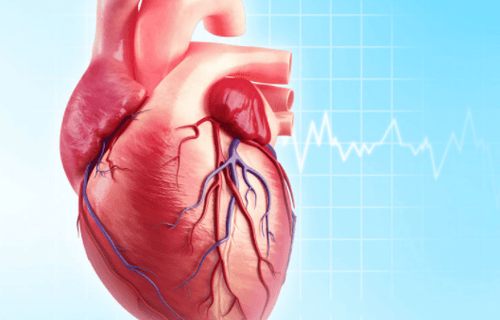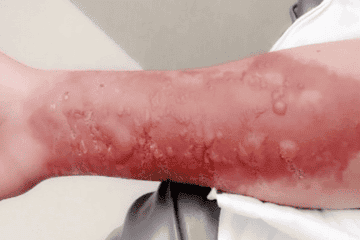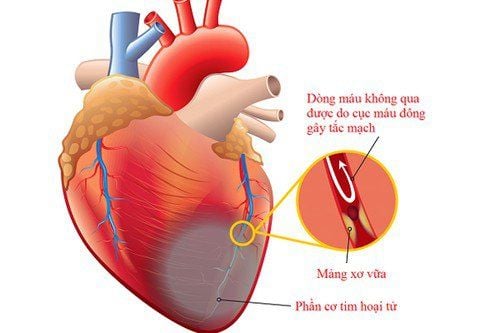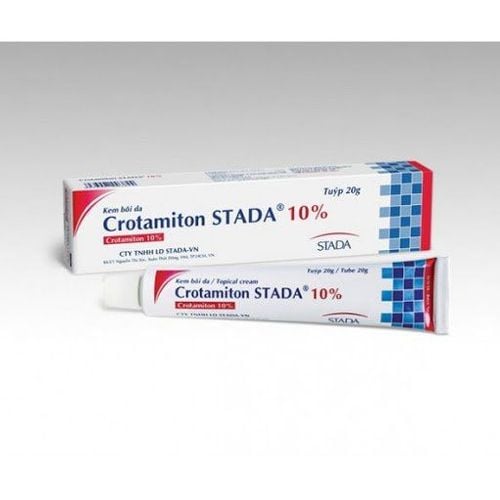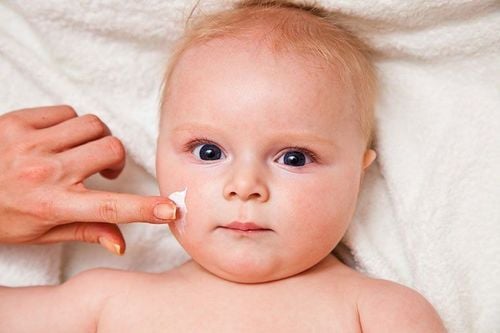This is an automatically translated article.
Burns are a common reaction of the skin to sudden extreme heat, but there are many forms of deep damage that can develop and affect the function of other parts of the body.1.What is a skin burn?
Burn is a form of damage to the epidermis of the skin and subcutaneous tissue, occurs due to exposure to chemical temperatures or other physical agents such as too hot, too cold...If it's just scars Ordinary minor burns can be easily handled without any problems, and daily activities are not affected much. However, deep burns, more severe burns, accompanied by skin sores and deep lesions, so it is imperative that the professional skills of doctors are required.
2. Treatment of sequelae after burns
Using special drugs such as corticosteroids will be used to inject directly into the scar, topical drugs with antibiotics penicillamine, histamine, colchicine, methotrexate, hirudoid, madecassol... Besides, the doctor also will use mechanical measures to overcome: method of pressure generation, method of pressure combined with the use of silicone with gel, especially methods of fixing the neck and extremities by mechanical tools.Physiotherapy is also part of the treatment regimen such as: X-ray light, pulse machine, ultrasound, cryotherapy, CO2 laser, or color laser of all kinds... In the treatment The sequelae caused by burns, today people are also very interested in surgical methods, especially for large scars, or scars that have the ability to stretch, lose aesthetics, make patients lose confidence. . However, it usually takes more than 6 months when the burns have healed and become stable scars before the doctor agrees to operate.
If surgery is performed as soon as the scar has stabilized in a soft form, not a hard form, there will still be inflammatory cells inside the wound, and the impact of drugs will cause secondary traction. traction immediately after surgery. At that time, the doctor must have timely arising plans, especially one surgery will not completely fix it, but must go through each stage of partial resolution, besides combining with physical therapy to quick recovery.
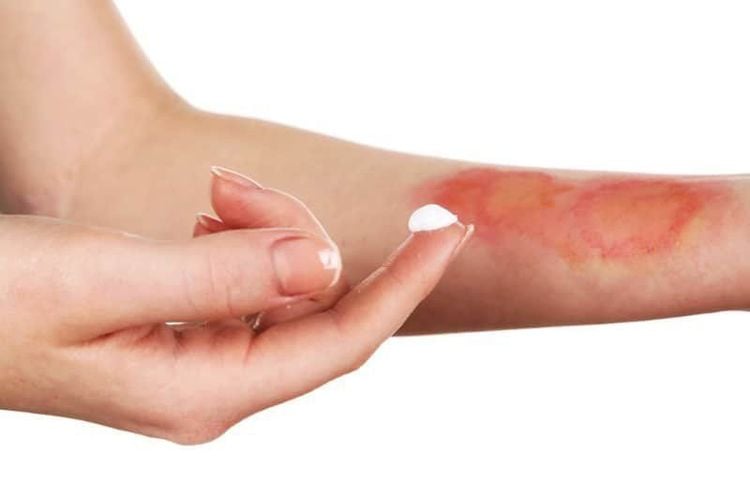
Sử dụng các loại thuốc đặc trị để phục hồi da sau bỏng
3. Rehabilitation after burns
3.1 Treating Burns Immediately remove burning agents or possibly burning areas or chemicals. If burns are caused by chemicals, remove clothing quickly. Helpers also need to be careful to avoid getting chemicals on people. Treat the burn immediately with cold water, leave the wound open, do not cover the wound with anything to avoid infection. Take the person with the burn to the nearest medical center or hospital. 3.2 Treatment in medical centers, hospitals Anti-shock with blood transfusion and intravenous fluids Anti-inflammation of blood protein by oral administration, or infusion of Sodium bicarbonate Use pain relievers when the pain is at its peak Prevention by: drugs to support the heart when in danger Use tonic when needed, as prescribed by the doctor Antibacterial, anti-tetanus with antibiotics. Clean the wound area, change cotton gauze daily, cut off the epidermal tissue, necrotic skin organization when present. Eat a reasonable diet: the first day you eat liquid, gradually return to eating normally. If there is a skin graft area: take care to keep the graft alive and not to be infected or infected. 3.3 Rehabilitation surgery After surgery, the movement of the joints will be limited, especially plastic and orthopedic surgery needs more rehabilitation.Skin graft surgery will limit the movement of the joint the most.
Orthopedics of extremities and neck with fixed braces This helps to prevent contractures or deformities of the parts, and restores the best working posture to the joints.
Fixed by splint to prevent secondary deformity:
Neck: lying position to avoid bending over, pillow from shoulder area. Spine: avoid the phenomenon of spine curvature, deformity, hunchback or hunchback in case the person burns an area of the chest or an area of the back. Armpit: minimize all movement from shoulder joint, brace perpendicular to trough or use arm sling. Leg: for people with burns on elbow or knee joint, brace in fully extended state Ankle and foot: brace perpendicular Wrist and hand: splint to fix wrist and finger Hip: bandage, brace the groin area to open 60 degrees, limit pressure, create distance for movement while splinting. Drugs used to treat: using painkillers, antibacterial drugs, anti-shock drugs, anti-hyperproteinemia, combined with sprays or ointments applied to the skin surface.
3.4 Physiotherapy This method helps prevent respiratory complications as well as muscle and joint contractures, restores circulation, and restores function of body parts.
Light burns, small area: The main exercise will be to move and maintain the strength of the muscles, joints, burn areas and burn effects. More severe burns, if you have to stay in bed because of weak physical strength, you need to lie in the correct position for the first 48 hours, then start gentle exercise. After 48 hours, the patient should sit up, and practice breathing, coughing, active, gentle, active, and gentle movement 3 times a day, and then gradually walk again. Patients are indicated for treatment with a closed bandage method, should use warm water to gently cover, gently clean to gradually peel off dead skin epidermal tissues, restore wounds. When the burn has completely healed, ultrasound should be combined with procedures to break the bottom of the sticky scar to avoid scarring. If the patient is assigned a skin graft: keep the skin graft alive so that it is attached to the granulation tissue. Burns with non-gravity areas should be immobilized for 5 to 7 days, while areas subject to gravity should be immobilized for 10 to 15 days. During that time, it is recommended to do exercises to strengthen muscles in the immobile area
Rehabilitation exercises: exercises that start from gentle, ensuring the maintenance of activity, muscle strength, to meticulous exercises that require dexterity. dexterity of hands. Rehabilitation in daily personal activities: practice self-service eating, daily cleaning, then gradually support the family.
4. How to integrate into the community
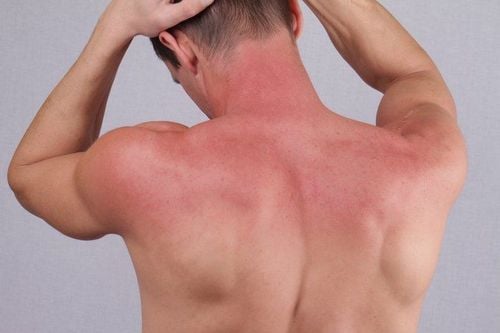
Cần cẩn thận trong hoạt động sau khi phục hồi chức năng
Burn treatment combined with rehabilitation after burns will help the patient's recovery process faster, the patient can return to daily activities sooner.
Please dial HOTLINE for more information or register for an appointment HERE. Download MyVinmec app to make appointments faster and to manage your bookings easily.




